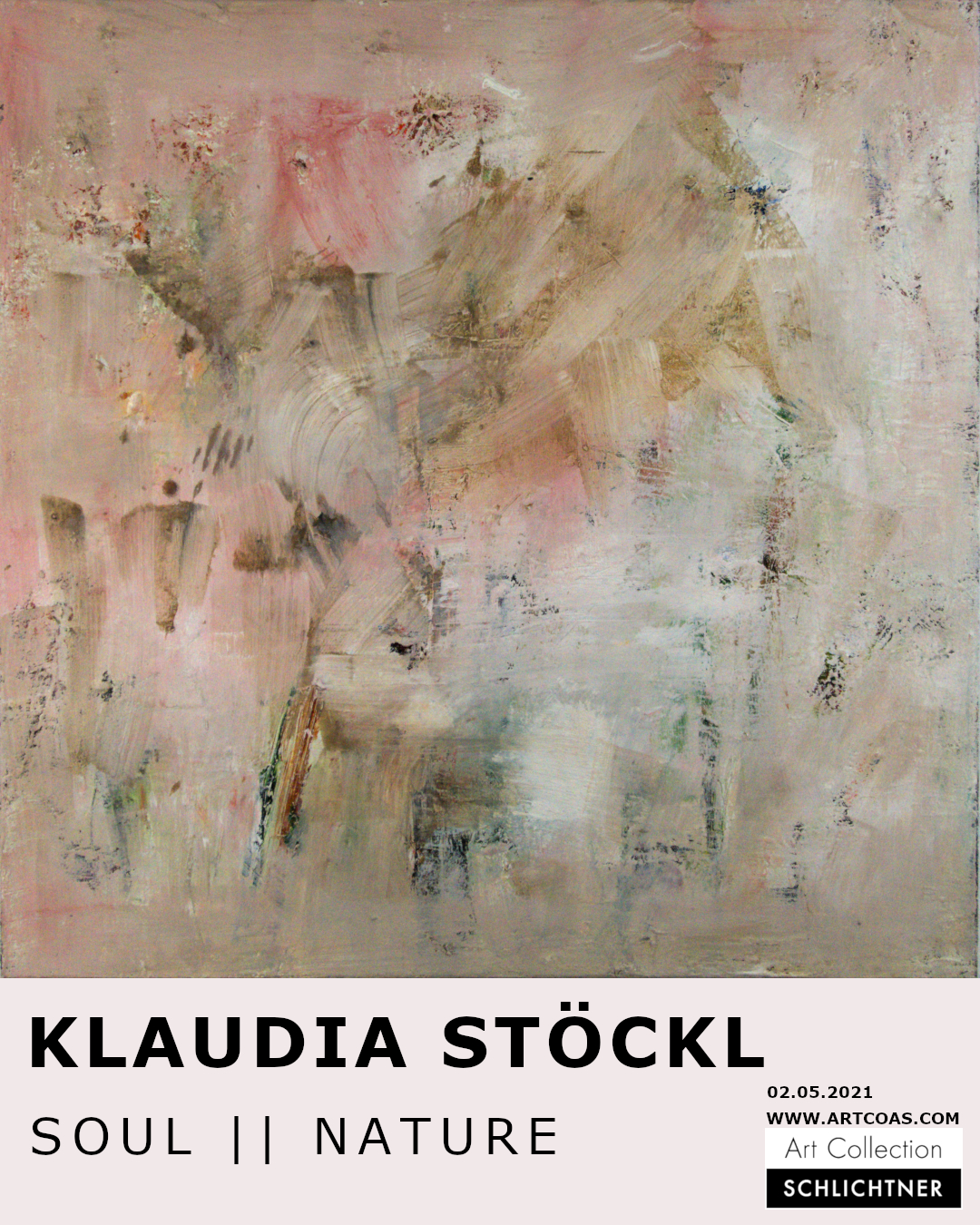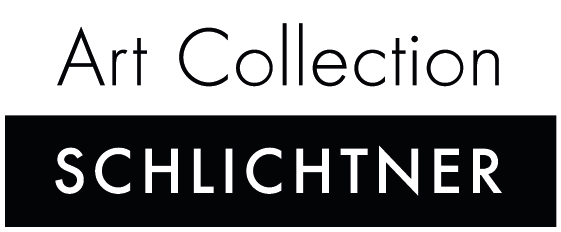Klaudia Stöckl - NATURE // SOUL - online solo exhibition - 02.05.2021

Fotocredit: Photo courtesy of Art Collection Schlichtner and Klaudia Stöckl © Bildrecht Wien 2021
Klaudia Stöckl - NATURE // SOUL - online solo exhibition
On Lines and Nature
Thoughts on the work of Klaudia Stöckl
Text: Dr.Elisabeth Voggeneder
Once again the forest is full of fragrance. It lifts the soaring larks up into the heavens, which lay so heavy upon our shoulders. (...) Then it is quiet. Even the rain goes more softly over the stones’ peacefully darkening shine. All sounds tuck themselves wholly away under the glistening buds of the bushes. (Rainer Maria Rilke, Out of an April)
Delicate, fine, and solitary. Powerful, moving, and aggressive. Monochrome, silent, and gestural. Lines prance in rhythm upon modulated white surfaces. Lines balance in the spaces of color, rub against the layers of paint, intensifying into rich shadings or dissolving, almost imperceptible now, into emptiness. Although her linear configurations may seem abstract, nature provides the starting point for her work. Emerging from the study of landscapes, Klaudia Stöckl has developed a pictorial technique that translates the world of nature onto the canvas.
Stöckl, an autodidact, began to paint in 1997, later taking lessons from Karl Korab, Giselbert Hoke, and Dietmar Brehm. Her early pieces were fine watercolors with a clear connection to the world as we perceive it, as can be seen in the leaves of the landscapes surrounding the town of Eggenburg. However, Stöckl soon began converting her impressions of the nature around her into abstract mood images, creating abstract landscape interpretations by the year 2000. From then on, the structure, color, and contour of her scenic impressions are the clear driving force behind her paintings, which explore the “how” of the landscape.
Stöckl lives in the Mostviertel region, drawing inspiration from her immediate surroundings – the soft hills and fluctuating play of colors in the broad countryside providing continual motivation to carefully observe the many ways in which nature shows itself. The artist also frequently visits the Weinviertel and Waldviertel regions, her continuous travel stimulating her involvement with nature.
Over the last five years, Klaudia Stöckl has developed an extensive array of pieces focusing on nature and the landscape in a very broad sense – represented through drawings and paintings – that express and formulate her unique visual language as it becomes increasingly differentiated. She prefers a square, medium-sized format, and enjoys working on paper that she then applies to a canvas. Her pigments are pure and granular, with a very intense color effect and a palette reduced to a few shades of white, black, brown, ocher, and red. Layers upon layers of paint are brushed on to produce a spatial depth of color, characterized by subtle transitions and fine shading. The artist consciously allows the colors to flow together and the layers to merge – something carried over from her watercolor paintings – provoking a fragile three-dimensionality with clear tactile expression. Eruptive and dynamic, she sets linear compositions upon this base, her expressive handwriting scraping and scratching powerful tracks into the body of color.
Her concentration upon only a few formal aspects imbues Klaudia Stöckl’s methods with something like an orchestral polyphony. The reduced coloration enters into a dialogue with the luminosity of the paint, while the calm overall layout creates a counterpoint to the liveliness of the expressive line work. Lines, form, and space come together to create a subtle structure.
The artist reaches a high point with the group of works titled Terra Incognita, painted from 2007-09 and encompassing over 30 paintings. The chromatic triad of brown, ocher, and black fans out in a nuance-rich spectrum with a sensitive interplay of colors. Contrasting yet harmonious, blocks of color are set next to empty spaces, while organic forms and fragments romp about in abstraction. The darkness of a shady forest is visualized by one image, as are a gnarled pear tree branch and a grapevine withered on the hills. These works center on transforming impressions of nature into a representation of a state of being. Brightness, quietude, peace, distance, and darkness reflect experiences that are repeated in the viewing of the abstracted landscapes.
With the painting An einem Fluss (On a River; 2010), Stöckl opens up a broader range of association. The artist tells us how, while sitting on a river, the meditative quality of the sweeping view inspired a new series of works, one that puts a much clearer focus on contemplation.[1] A fascinating series of meditative images was born from this idea during the summer of 2010.
Unlike in her landscape-inspired works, Klaudia Stöckl now makes sensation a clearer conceptual focus of her paintings. Not visual impressions, but instead abstract notions of the state of being are now depicted as shapes. Stroke for stroke, these ideas are joined together in controlled, vertical batches. The repetition – creating here an interwoven structural pattern – suggests the mental principles of practicing meditation. Emotion is no longer expressed as an explosive act; it now is exercised with sensitive and careful restraint.
Interestingly, this allows another means of portrayal to find its way into the artist’s work. While the pieces in the landscape series were geared more toward informal gestural painting styles, control and calculation gain importance in the meditational series. The imagery is now quite minimalistic, taking an objectified approach that greatly reduces the handwritten quality. This takes us full circle to the untitled works painted in the 2000s, which isolate symbols into abstraction, superimposing them like tiles and transforming them into an abstract sign language.
Klaudia Stöckl uses lines in many different ways, revealing their divergent possibilities and contexts, and creating an arch reaching from a subjective-Tachist to a concrete-conceptual approach, thus infusing her work with a very special diversity and intensity of expression.
Klaudia Stöckl’s work – even when exploring tranquility – follows the tradition of expressive composition that began in Austria with Egon Schiele’s landscapes, also tying into Max Weiler’s work-nature relationship and post-modern approaches to the lyrical abstraction of nature. Like in Rilke’s poetic depictions, concrete experiences are transformed into contemplative images of nature.
[1] Klaudia Stöckl in conversation with the author on April 19, 2011.
